#william kellner
Explore tagged Tumblr posts
Text


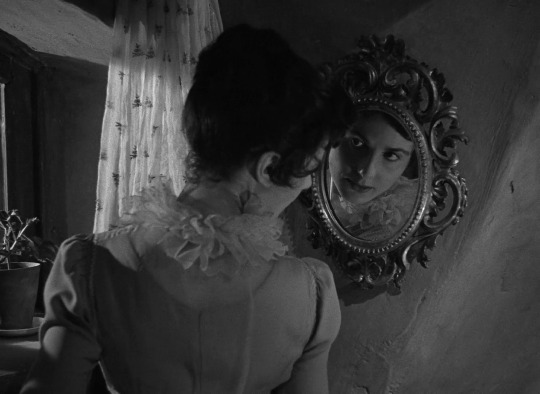

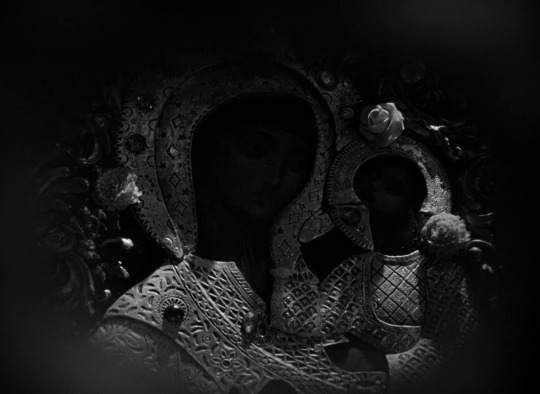

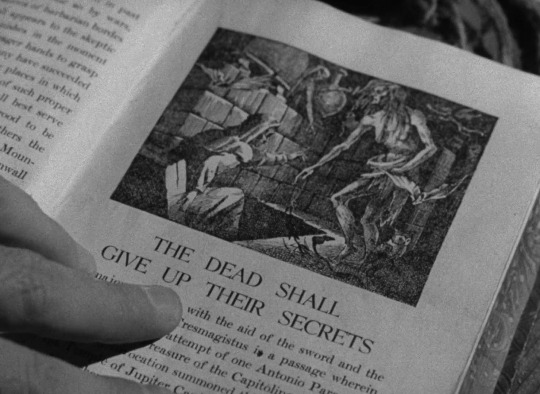


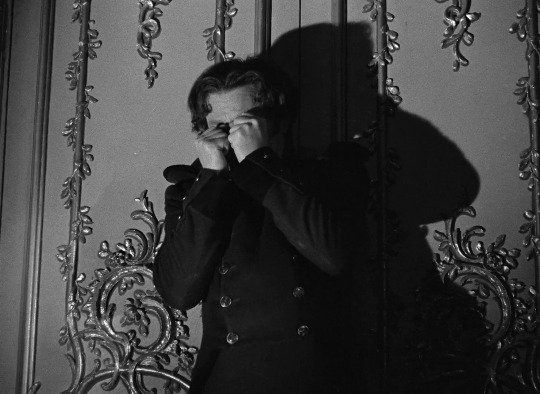
The Queen of Spades (Thorold Dickinson, 1949).
191 notes
·
View notes
Photo

Transformers: Multiverse #33 - "Newborn"
Originally posted on March 30th, 2014
Story, Flats, Letters - HdE Art - Pete Singer Colours - Patrick Kellner
deviantART
wada sez: This offbeat little strip is set during the final battle from the first Transformers movie, after the AllSpark has brought to life many electrical devices throughout the city.
#Transformers#Maccadam#Live-action film series#Transformers: Multiverse#HdE#Pete Singer#Patrick Kellner#wada recs#Ironhide#William Lennox
19 notes
·
View notes
Photo

Bad movie I have Pearl Harbor 2001
#Pearl Harbor#Ben Affleck#Josh Hartnett#Kate Beckinsale#William Lee Scott#Greg Zola#Ewen Bremner#Alec Baldwin#Jaime King#Catherine Kellner#Jennifer Garner#Jon Voight#Cuba Gooding Jr.#Michael Shannon#Matthew Davis#Mako#John Fujioka#Cary-Hiroyuki Tagawa#Colm Feore#Dan Aykroyd#Reiley McClendon#Jesse James#William Fichtner#Steve Rankin#Brian Haley#David Hornsby#Scott Wilson#Graham Beckel#Howard Mungo#Randy Oglesby
1 note
·
View note
Text
BUFFY READING LIST
As promised @possession1981 and I have compiled a list of Buffy the Vampire Slayer (and Angel) related academic text and books. I think this is a good starting point for both a long time fan and for someone just getting into the show, or just someone interested in vampire lore. I have included several books about the vampire lore and myth in general as well. Most of these are available online.
BOOKS
Fighting the Forces: What's at Stake in Buffy the Vampire Slayer; edited by Rhonda V. Wilcox & David Lavery
Buffy the Vampire Slayer and Philosophy - Fear and Trembling in Sunnydale by James B. South
Buffy Goes Dark: Essays on the Final Two Seasons of Buffy the Vampire Slayer on Television, edited by Lynne Y. Edwards, Elizabeth L. Rambo & James B. South
Buffy the Vampire Slayer: Myth, Metaphor and Morality by Mark Field
Televised Morality: The Case of Buffy the Vampire Slayer by Gregory Stevenson
Undead TV: Essays on Buffy the Vampire Slayer by Elana Levine
The Aesthetics of Culture in Buffy the Vampire Slayer by Matthew Pateman
Girls Who Bite Back: Witches, Mutants, Slayers and Freaks by Emily Pohl-Weary
Why Buffy Matters: The Art of Buffy the Vampire Slayer by Ronda Wilcox
Into Every Generation a Slayer Is Born: How Buffy Staked Our Hearts by Evan Ross Katz
The Lure of the Vampire: Gender, Fiction, and Fandom from Bram Stoker to Buffy the Vampire Slayer by Milly Williamson
Blood Relations: Chosen Families in Buffy the Vampire Slayer and Angel by Jes Battis
Sex and the Slayer: A Gender Studies Primer for the Buffy Fan by Lorna Jowett
Diseases of the Head: Essays on the Horrors of Speculative Philosophy; edited by Matt Rosen (chapter 2 Death of Horror)
Public Privates: Feminist Geographies of Mediated Spaces by Marcia R. England (chapter 1 Welcome to the Hellmouth: Paradoxical Spaces in Buffy the Vampire Slayer)
Open Graves, Open Minds: Representations of Vampires and the Undead From the Enlightenment to the Present Day; edited by Sam George and Bill Hughes (chapter 8 ‘I feel strong. I feel different’: transformations, vampires and language in Buffy the Vampire Slayer)
The Contemporary Television Series; edited by Michael Hammond and Lucy Mazdon (chapter 9 Television, Horror and Everyday Life in Buffy the Vampire Slayer)
Joss Whedon and Race: Critical Essays; edited by Mary Ellen Iatropoulos and Lowery A. Woodall III
Buffy and the Heroine's Journey: Vampire Slayer as Feminine Chosen One by Valerie Estelle Frankel
The Existential Joss Whedon: Evil and Human Freedom in Buffy the Vampire Slayer, Angel, Firefly and Serenity by J. Michael Richardson and J. Douglas Rabb
Buffy the Vampire Slayer 20 Years of Slaying: The Watcher's Guide Authorized by Christopher Golden
Reading the Vampire Slayer: The Complete, Unofficial Guide to 'Buffy' and 'Angel' by Roz Kaveney
Hollywood Vampire: The Unnoficial Guide to Angel by Keith Topping
Buffy the Vampire Slayer: The Monster Book by Christopher Golden
Slayer Slang: A Buffy the Vampire Slayer Lexicon by Michael Adams
What Would Buffy Do? The Vampire Slayer as Spiritual Guide by Jana Riess
ARTICLES, PAPERS ETC.
Bibliographic Good vs. Evil in Buffy the Vampire Slayer by GraceAnne A. DeCandido
Undead Letters: Searches and Researches in Buffy the Vampire Slayer by William Wandless
Weaponised information: The role of information and metaphor in Buffy the Vampire Slayer by Jacob Ericson
Buffy, Dark Romance and Female Horror Fans by Lorna Jowett
My Vampire Boyfriend: Postfeminism, "Perfect" Masculinity, and the Contemporary Appeal of Paranormal Romance by Ananya Mukherjea
Buffy, The Vampire Slayer as Spectacular Allegory: A Diagnostic Critique by Douglas Kellner
"Buffy the Vampire Slayer": Technology, Mysticism, and the Constructed Body by Sara Raffel
When Horror Becomes Human: Living Conditions in "Buffy the Vampire Slayer" by Jeroen Gerrits
Post-Vampire: The Politics of Drinking Humans and Animals in "Buffy the Vampire Slayer, Twilight", and "True Blood" by Laura Wright
Cops, Teachers, and Vampire Slayers: Buffy as Street-Level Bureaucrat by Andrea E. Mayo
"Not Like Other Men"?: The Vampire Body in Joss Whedon's "Angel" by Lorna Jowett
Buffy the Vampire Slayer and the Domestic Church: Revisioning Family and the Common Good by Reid B. Locklin
“Buffy vs. Dracula”’s Use of Count Famous (Not drawing “crazy conclusions about the unholy prince”) by Tara Elliott
A Little Less Ritual and a Little More Fun: The Modern Vampire in Buffy the Vampire Slayer by Stacey Abbott
Undressing the Vampire: An Investigation of the Fashion of Sunnydale’s Vampires by Robbie Dale
"And Yet": The Limits of Buffy Feminism by Renee St. Louis & Miriam Riggs
Meet the Cullens: Family, Romance and Female Agency in Buffy the Vampire Slayer and Twilight by Kirsten Stevens
Bliss and Time: Death, Drugs, and Posthumanism in Buffy the Vampire Slayer by Rob Cover
That Girl: Bella, Buffy, and the Feminist Ethics of Choice in Twilight and Buffy the Vampire Slayer by Catherine Coker
A Slayer Comes to Town: An Essay on Buffy the Vampire Slayer by Scott Westerfeld
Undead Objects of a “Queer Gaze” : A Visual Approach to Buffy’s Vampires Using Lacan’s Extended RSI Model by Marcus Recht
When You Kiss Me, I Want to Die: Gothic Relationships and Identity on Buffy the Vampire Slayer by Ananya Mukherjeea
Necrophilia and SM: The Deviant Side of Buffy the Vampire Slayer by Terry L. Spaise
Queering the Bitch: Spike, Transgression and Erotic Empowerment by Dee Amy-Chinn
“I Want To Be A Macho Man”: Examining Rape Culture, Adolescent Female Sexuality, and the Destabilization of Gender Binaries in Buffy the Vampire Slayer by Angelica De Vido
Staking Her Claim: Buffy the Vampire Slayer as Transgressive Woman Warrior by Frances H. Early
Actualizing Abjection: Drusilla, the Whedonversees’ Queen of Queerness by Anthony Stepniak
“Life Isn’t A Story”: Xander, Andrew and Queer Disavowal in Buffy the Vampire Slayer by Steven Greenwood
S/He’s a Rebel: The James Dean Trope in Buffy the Vampire Slayer by Kathryn Hill
“Once More, with Feeling”: Emotional Self-Discipline in Buffy the Vampire Slayer by Gwynnee Kennedy and Jennifer Dworshack-Kinter
“The Hardest Thing in This World Is To Live In It”: Identity and Mental Health in Buffy the Vampire Slayer by Alex Fixler
"Love's Bitch But Man Enough to Admit It": Spikes Hybridized Gender by Arwen Spicer
Negotiations After Hegemony: Buffy and Gender by Franklin D. Worrell
Double Trouble: Gothic Shadows and Self-Discovery in Buffy the Vampire Slayer by Elizabeth Gilliland
'What If I'm Still There? What If I Never Left That Clinic?': Faërian Drama in Buffy's "Normal Again" by Janet Brennan Croft
Not Gay Enough So You’d Notice: Poaching Fuffy by Jennifer DeRoss
Throwing Like A Slayer: A Phenomenology of Gender Hybridity and Female Resilience in Buffy the Vampire Slayer by Debra Jackson
“You Can’t Charge Innocent People for Saving Their Lives!” Work in Buffy the Vampire Slayer by Matt Davies
Ambiguity and Sexuality in Buffy the Vampire Slayer: A Sartrean Analysis by Vivien Burr
Imagining the Family: Representations of Alternative Lifestyles in Buffy the Vampire Slayer by Vivien Burr and Christine Jarvis
Working-Class Hero? Fighting Neoliberal Precarity in Buffy’s Sixth Season by Michelle Maloney-Mangold
A Corpse by Any Other Name: Romancing the Language of the Body in Mary Shelley's Frankenstein for the Adam Storyline in Buffy the Vampire Slayer by Amber P. Hodge
Sensibility Gone Mad: Or, Drusilla, Buffy and the (D)evolution of the Heroine of Sensibility by Claire Knowles
"It's good to be me": Buffy's Resistance to Renaming by Janet Brennan Croft
Death as a Gift in J.R.R. Tolkien’s Work and Buffy the Vampire Slayer by Gaelle Abalea
“All Torment, Trouble, Wonder, and Amazement Inhabits Here": The Vicissitudes of Technology in Buffy the Vampire Slayer by James B. South
Staking Her Colonial Claim: Colonial Discourses, Assimilation, Soul-making, and Ass-kicking in Buffy the Vampire Slayer by Jessica Hautsch
“I Run To Death”: Renaissance Sensibilities in Buffy the Vampire Slayer by Christine Jarvis
Dressed To Kill: Fashion and Leadership in Buffy the Vampire Slayer by Christine Jarvis and Don Adams
Queer Eye Of That Vampire Guy: Spike and the Aesthetics of Camp by Cynthea Masson and Marni Stanley
“Sounds Like Kinky Business To Me”: Subtextual and Textual Representations of Erotic Power in Buffyverse by Lewis Call
“Did Anyone Ever Explain to You What ‘Secret Identity’ Means?”: Race and Displacement in Buffy and Dark Angel by Cynthia Fuchs
“It’s About Power”: Buffy, Foucault, and the Quest for Self by Julie Sloan Brannon
Why We Love the Monsters: How Anita Blake, Vampire Hunter, and Buffy the Vampire Slayer Wound Up Dating the Enemy by Hilary M. Leon
Why We Can’t Spike Spike?: Moral Themes in Buffy the Vampire Slayer by Richard Greene and Wayne Yuen
Buffy, the Scooby Gang, and Monstrous Authority: BtVS and the Subversion of Authority by Daniel A. Clark & P. Andrew Miller
Are Vampires Evil?: Categorizations of Vampires, and Angelus and Spike as the Immoral and the Amoral by Gert Magnusson
BOOKS ABOUT VAMPIRE LORE AND MYTH IN GENERAL
The Vampire Lectures by Laurence A. Rickels
Our Vampires, Ourselves by Nina Auerbach
Vampires, Burial, and Death: Folklore and Reality by Paul Barber
The Secret History of Vampires: Their Multiple Forms and Hidden Purposes by Claude Lecouteux
The Vampire Cinema by David Pirie
The Living and the Undead: Slaying Vampires, Exterminating Zombies by Gregory A. Waller
Vampire Forensics: Uncovering the Origins of an Enduring Legend by Mark Jenkins
Slayers and Their Vampires: A Cultural History of Killing the Dead by Bruce A. McClelland
The History and Folklore of Vampires: The Stories and Legends Behind the Mythical Beings by Charles River Editors
Encyclopedia of Vampire Mythology by Theresa Bane
Vampires of Lore: Traits and Modern Misconceptions by A. P. Sylvia
The Vampire: A New History by Nick Groom
Vampyres: Genesis and Resurrection: from Count Dracula to Vampirella by Christopher Frayling
Race in the Vampire Narrative by U. Melissa Anyiwo
Vampires, Race, and Transnational Hollywoods by Dale Hudson
259 notes
·
View notes
Text
NUVO Orlando Teen Solo Results '25
1st: Bella Rey D'Armas (Stars Dance) DJP
2nd: Lena Garcia (Dance Unlimited) DJP
3rd: Zoe Flores (Stars Dance) DJP
4th: Natalja Rawls (Xplosive Dance Academy) DJP
5th: Adelyn Kolanz (Dance Universe) DJP
5th: Ellie Brunson (Michelle Latimer) DJP
5th: Amabella Tarrago (Stars Dance) DJP
5th: Sienna Roppa (Viera Dance) DJP
5th: Desa Jankes (WFDC) DJP
5th: Blake Metcalf (Xtreme Dance Studio) DJP
6th: Santiago Sosa (Stars Dance) DJP
6th: Alexandra Perez (Dance Universe) DJP
6th: Aria Secall (Peaches Dance Orlando) DJP
7th: Gabriel Gebara (G-Force Dance Company) DJP
8th: Lucy Tagg (Xtreme Dance Studio) DJP
9th: Elena Stewart (TC The Company) DJP
9th: Julia Ferreira (Peaches Dance Orlando) DJP
10th: Gabriella Landry (Michelle Latimer) DJP
10th: Simone Smith (Victoria's School of Dance) DJP
10th: Mariah Williams (Michelle Latimer) DJP
10th: Sydney Williams (Contempo School) DJP
Also receiving DJP adjudication:
-Mila Talab, Tya Nalani, Charlotte Koonce, Addison Weyrauch, Alyssa Elser, Bella Cianni Llerena, Reagan Hess, Ava Bronson, Alayna Sanguine, Madison Jackson, Alexandra Mederos, Sophie Kellner, Ally Reuter, Savy Luechtefeld
6 notes
·
View notes
Text
THE DANCE AWARDS ORLANDO RESULTS 2023
JP! awards that didn’t place in the top 10 Junior Solos:
Sadie Wen - CDC JP!
Karina Schilling - ARTISTIC EDGE JP!
Madeleine Shen - NORTHPOINTE JP!
Ryder Rosaasen - WESTCHESTER JP!
Grayson Niemczyk - CDC JP!
Addison Leibowitz - WESTCHESTER JP!
Chloe Greenfield - CDC JP!
Crystal Fu - WESTCHESTER JP!
Khloe Jenkins - RHYTHM JP!
Alexandra Mederos - STARS JP!
Jaya Campagna-Terrell - VLAD’S JP!
Cora Wunder - RHYTHM JP!
Sophie Kellner - STARS JP!
Alex Cruz - VLAD’S JP!
Bianca Rebellato - VLAD’S JP!
Ellerie Cox - SOUTHERN STRUTT JP!
Savea Erickson - WOODBURY JP!
Eden Hardy - WOODBURY JP!
Vivie Strickland - SOUTHERN STRUTT JP!
Isabella Shortridge - UPSTATE CAROLINA JP!
Ella Hooley - WOODBURY JP!
Layla Karadchy - SOUTHERN STRUTT JP!
Emily Jungmann - WOODBURY JP!
Lillian Finley - UPSTATE CAROLINA JP!
Adriana Rhame - SOUTHERN STRUTT JP!
Taylor Rivers - SOUTHERN STRUTT JP!
Miley Mattey - 3’ N MOTION JP!
Molly McDowell - G-FORCE JP!
Peyton Robinson - DANCE UNLIMITED JP!
Adrienne Pazos - MIAMI DANCE COMPANY JP!
Savy Luechtefeld - CAROLINA COLLECTIVE JP!
Berkeley Scifres - P21 JP!
Naomi Dickie - PDA JP!
Desa Jankes - NEW LEVEL JP!
Ava Anderson - ROCKSTAR JP!
Aliette Valdes - DANCE UNLIMITED JP!
Isabella Keller - STUDIO 412 JP!
Reagan Hess - NEW LEVEL JP!
Layla Alvarez - DANCE UNLIMITED JP!
Cali Cassidy - P21 JP!
Chloe Mirabal - P21 JP!
Ava Alaimo - THE NINE JP!
Alexia Perri - THE NINE JP!
Jillian Mahan - P21 JP!
Aubrey Scaggs - EVOLVE JP!
Bristyn Scifres - P21 JP!
Mia Jorge - THE NINE JP!
Violet McGuire - THE VISION JP!
Zoey Williams - EVOLVE JP!
Ethan Ferrante - THE NINE JP!
Peyton Hertzig - EVOLVE JP!
Julia Amato - THE VISION JP!
Ruby Arnold - TRUE DANCE JP!
Ella Dobler - NEW LEVEL JP!
17 notes
·
View notes
Text
Südengland 2023 - Tag 16
Ladies and Gentlemen!
Heute verlassen wir unser schnuckeliges Cottages am Brue River und wir machten uns auf den Weg, bis in den New Forest Nationalpark.

Ein letztes Mal schauen wir zum Tor von Glastonbury hoch und auch bei dem Festivalgelände sehen wir noch einmal nach dem Rechten. Inzwischen wurden jede Menge mobiler Toilettenkabinen angeliefert und auch die Zeltstadt nimmt langsam Formen an.

Der New Forest Nationalpark befindet sich im Süden Englands und bildet eine weitläufige, abwechslungsreiche Region. Der Nationalpark besteht aber keineswegs nur aus Wäldern, auch wenn das Forest im Namen das suggeriert.

Der Nationalpark heißt zwar „New“, also „neu“, der Wald wurde allerdings bereits 1079 als Jagdgebiet für König William I. angelegt.

Seitdem sorgen mittelalterliche Gesetze dafür, dass sich Tiere frei und ungehindert bewegen können. Dies gilt bis heute: Tausende Ponys, Rinder und Schweine durchstreifen das Gelände.
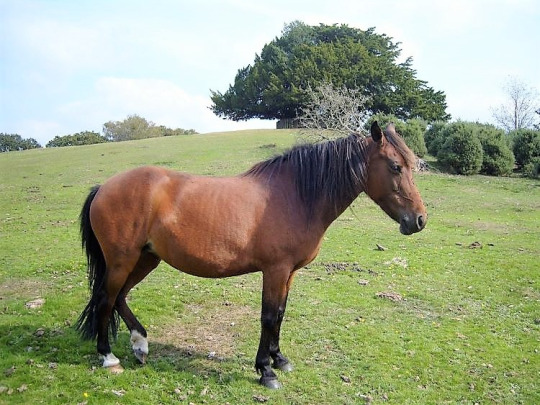
Große Bereiche dienen auch als Ackerland oder sind unscheinbare Heidelandschaften, in denen Tiere schon seit Jahrhunderten grasen.
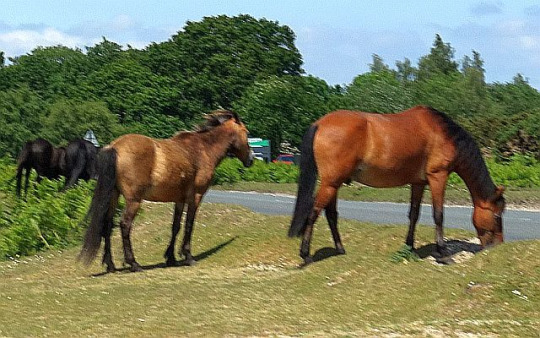
Die Wälder sind zum Schutz vor Nutztieren allesamt eingezäunt (sogenannte Inclosures). So wird verhindert, dass die Tiere den Wald zerstören.
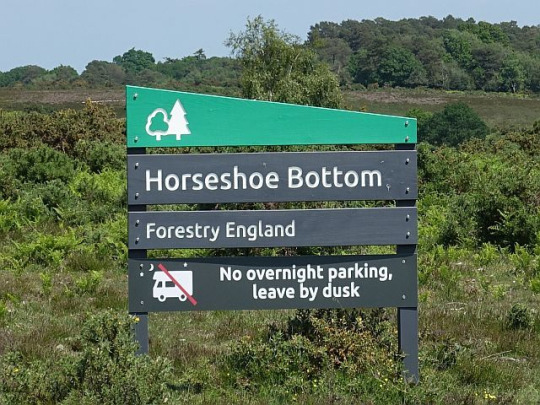
Wir fuhren quer durch den New Forest zu Orten, an denen man gerne länger anhalten würde, Lynhurst, Minstead, Totton, Boldre, Lymington und Beaulieu.

Jeder Ort hätte viel zu sehen und zu tun. Wir nehmen uns vor, dass wir hier noch einmal wieder kommen müssen und dann aber richtig, für ein paar Tage verweilen.
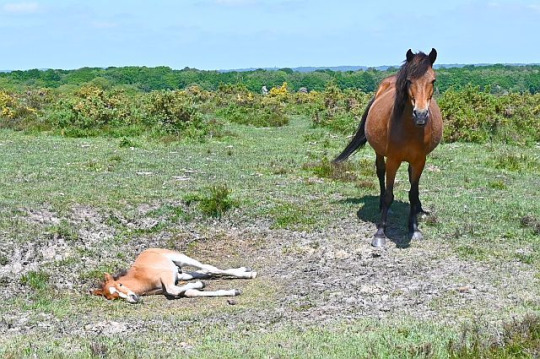
Mitten auf der Straße sind uns mehrere Stuten mit Fohlen begegnet, wir mussten anhalten, denn die Tiere haben Vorrang New Forest ist ein Naturschutzgebiet. Die Tiere dürfen seit Urzeiten frei und ohne Einzäunung rumlaufen und sind recht zutraulich.
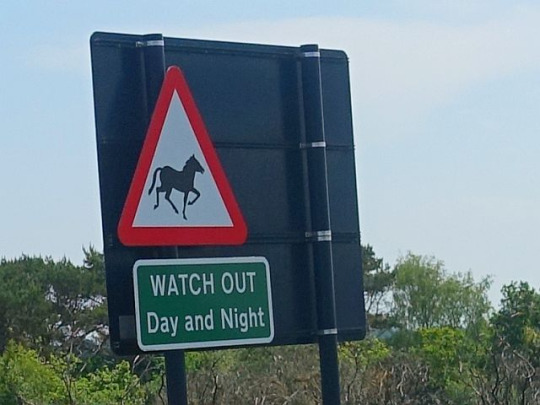
Gegen Mittag erreichen wir Lymington. Bei Lymington handelt es sich um eine urige Hafenstadt und einen der malerischsten Orte an der Küste von Hampshire.

Die geschichtsträchtige Stadt verfügt heute über eine der größten Marinas Europas, die 1000 Liegeplätze zählt und in der zahlreiche Luxusjachten liegen.

Lymington hegt seit jeher eine enge Bindung zum Meer: Der Wohlstand der Stadt rührt vom Meer her. Im Mittelalter war sie ein wichtiger Salzproduzent, im 18. Jahrhundert ein Schiffsbauzentrum und heute ist sie bekannt für Segelsport.

Vom Lymington Pier, an der östlichen Seite des Hafen, verkehrt mehrmals täglich eine Fähre, die zur Isle of Wight fährt.

Am frühen Nachmittag kehren wir im Macdonald Elmers Court Hotel ein. Das Hotel befindet sich in einem charmanten Herrenhaus mit Tudorgiebeln aus dem Jahr 1820 und ist von einem 23 Hektar großen, üppigen Privatgrundstück umgeben.

Die riesigen Flügelfenstern aus den frühen 1900er Jahren lenken den Blick auf den Solent.

Die exquisit verzierte Decke und das Gesims des Ballsaals sind beeindruckend, ebenso wie die hübsch geschnitzten Holzvertäfelungen im Musikzimmer und in der Bar.

Dort haben wir “ausnahmsweise” heute einen Afternoon Tea für uns bestellt. Für den Preis von 30 Pfund hätten wir da deutlich mehr erwartet.

Und dass wir in so einem Etablissement den Kellner aktiv auffordern müssen, doch bitte den Tisch einmal abzuwischen … naja. Doch der absolute Knaller war, als er dann mit so einem mini Feudel kam, wischte er ganz ökonomisch genau nur dort ab, wo wir saßen - der Rest des Tisches blieb, wie er war. Dafür gab es dann auch von uns, ganz ökonomisch, 0 Komma 0 Trinkgeld.

Ursprünglich als “The Elms” bekannt, wurde das Haus 1874 von der Familie Whitaker übernommen. James Whitaker war Abgeordneter und JP, und es wird angenommen, dass “The Elms” als örtliches Gerichtsgebäude genutzt wurde, daher die eventuelle Namensänderung in “Elmers Court”.

Als Hugh Whitaker das Anwesen 1893 erbte, baute er einen Großteil des Anwesens um und ergänzte viele seiner herausragenden Merkmale – die Giebel im Tudor-Stil und die hübsch geschnitzten Täfelungen.
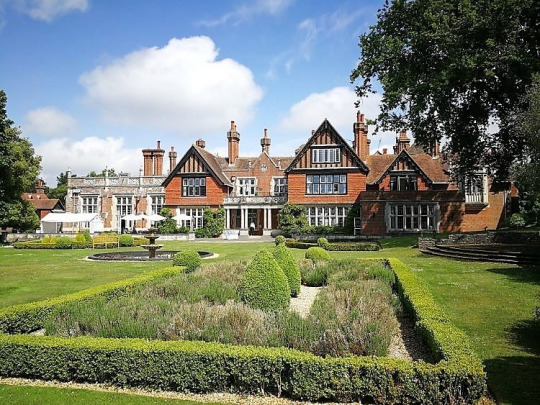
Das beeindruckende Herrenhaus war einst sogar eine Spionageschule. In den 1930er Jahren ging das Haus an den Gemeinderat über und wurde in den 1940er Jahren an das War Office verliehen.
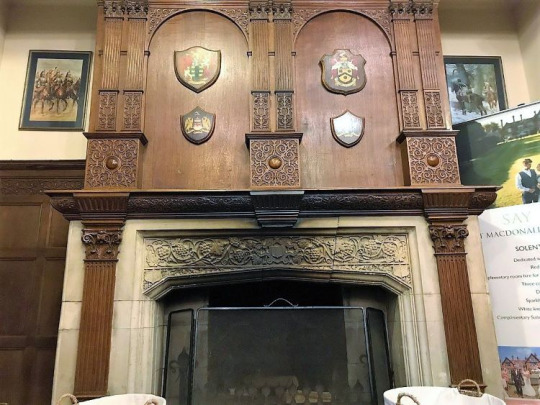
Es wurde von den amerikanischen und kanadischen Streitkräften als Elektronik- und Kommunikationszentrum genutzt, um die Landungen am D-Day zu koordinieren.

Für uns liegt das Elmers Court sehr günstig, nur fünf Gehminuten von Lymingtons Pier Station und den Fähren zur Isle of Wight entfernt - und mit dem Auto sind es quasi nur Sekunden.

Wir haben uns auf die 16 Uhr Fähre eingebucht. Das Zeitfenster zum Einchecken auf die Fähre ist zwischen 15 Uhr und 15.30 Uhr.

Das Wetter ist mehr als prächtig und wir sind viel zu warm angezogen. Als wir uns heute morgen startklar machten, rechneten wir mit einem frischen Wind an der Küste. Meine dicke Jacke, die ich vor 2 Wochen noch in Dünkirchen dringend brauchte, wartete heute vergebens auf ihren Einsatz.

Die Isle of Wight, die einfach nur als “die Insel” bezeichnet wird, ist von Lymington aus mit der Fähre in 40 Minuten zu erreichen.

Die Isle of Wight selber ist durch den Solent, einen Meeresarm des Ärmelkanals, vom Festland getrennt. Fähren gibt es von mehreren größeren und kleineren Städten entlang der Küste.

Wer mit dem eigenen Auto auf die Insel will, kommt nicht um die Wightlink Fähren herum. Auf der Fähre selbst sind die beiden unteren Decks für Autos reserviert.

Auf den oberen Decks kann man sich entweder hinter den großen Panoramafenstern verschanzen oder auf festgeschraubten Plastikbänken die Sonne genießen. Insgesamt unterhält Wightlink sechs dieser Schiffe.

Die Breite des Solent zwischen der Isle of Wight und dem Festland ist wirklich überschaubar: Bei einer maximalen Breite von gerade einmal fünf Meilen ist das gegenüberliegende Ufer so gut wie immer sichtbar.

Die Meerenge selbst ist eines der berühmtesten Segelreviere Englands. Die Stadt Cowes auf der Insel gilt als Segelhauptstadt des Königreiches. Hier wird auch der Admiral’s Cup ausgetragen.

Gegen 16.45 Uhr fahren wir in Yarmouth von der Fähre. Mit gerade einmal 885 Einwohnern ist Yarmouth der kleinste Ort Englands, der sich Town nennen darf. Dieses Recht wurde dem Örtchen 1135 verliehen.

Eine wirkliche glückliche Geschichte hat dieser Ort nicht zu bieten: Wegen seiner Lage als “Hüter” der Isle of Wight wurde er immer wieder von den Franzosen überfallen und niedergebrannt.
Auch vom Schiff wirkte der Hafen mehr als überschaubar. Dafür hatte man einen tollen Blick auf die Verteidigungsanlagen der Stadt. Hier steht heute leider nur noch eine einzige Kanone.

Die Isle of Wight gibt sich ansonsten als Erholungsgebiet. Den Einwohnern der Südküste Englands, bis rauf nach London, dient diese Insel als Ferienort und Rückzugsgebiet aus dem stressigen Alltag.

Wer Action sucht, ist hier eher falsch. Dafür gibt es jede Menge Campingplätze und Sommerhäuser.

Für uns geht es in östlicher Richtung, quer über die Insel, und nach etwa 45 haben wir den Ferienort Shanklin erreicht. Oberhalb des Ortes liegt der Parkdean Resorts Lower Hyde Holiday Park, in dem unsere Unterkunft, ein Caravan, liegt.

Hier richten wir uns am Abend für die nächste Woche häuslich ein. Es war ein langer Tag und wir werden heute sicherlich keine Unternehmungen mehr anstreben.

Bis wir unseren ganzen Krempel verstaut (oder auch verstreut) haben und das Abendessen zubereitet ist, dann ist der Abend für uns gelaufen.
Good N8
Angie, Micha und Mister Bunnybear (Hasenbär)
5 notes
·
View notes
Text
THE 236 GREATEST PERSONALITIES IN THE ENTIRE KNOWN HISTORY/COLLECTIVE CONSCIOUSNESS OF THIS WORLD! (@INDIES)
ie. THE 236 GREATEST PERSONALITIES IN WORLD HISTORY! (@INDIES)
Rajesh Khanna
Lionel Messi
Leonardo Da Vinci
Online Indie
Muhammad Ali
Joan of Arc
William Shakespeare
Vincent Van Gogh
J. K. Rowling
David Lean
Nadia Comaneci
Diego Maradona
Wolfgang Amadeus Mozart
Meena Kumari
Julius Caesar
Harrison Ford
Ludwig Van Beethoven
William W. Cargill
Fritz Hoffmann-La Roche
Samuel Curtis Johnson
Sam Walton
John D. Rockefeller
Andrew Carnegie
Roy Thomson
Tim Berners-Lee
Marie Curie
James J. Hill
Cornelius Vanderbilt
Roman Polanski
Samuel Slater
J. P. Morgan
Cary Grant
Dmitri Mendeleev
John Harvard
Alain Delon
Ramakrishna Paramhansa (Official God)
The Lumiere Brothers, Auguste & Louis
Carl Friedrich Benz
Michelangelo
Maharishi Mahesh Yogi
Ramana Maharishi
Mark Twain
Swami Sri Yukteswar Giri
Bruce Lee
Bhagwan Krishna (Official God)
Charlemagne
Rene Descartes
John F. Kennedy
Bhagwan Ganesha (Official God)
Walt Disney
Albert Einstein
Nikola Tesla
Alfred Hitchcock
Pythagoras
William Randolph Hearst
Cosimo de’ Medici
Johann Sebastian Bach
Alec Guinness
Nostradamus
Christopher Plummer
Archimedes
Jackie Chan
Guru Dutt
Amma Karunamayi/ Mata Parvati (Official God)
Peter Sellers
Gerard Depardieu
Joseph Safra
Robert Morris
Sean Connery
Petr Kellner
Aristotle Onassis
Usain Bolt
Jack Welch
Alfredo di Stefano
Elizabeth Taylor
Michael Jordan
Paul Muni
Steven Spielberg
Louis Pasteur
Ingrid Bergman
Norma Shearer
Dr. B. R. Ambedkar
Ayn Rand
Jesus Christ (Official God)
Luciano Pavarotti
Alain Resnais
Frank Sinatra
Allah (Official God)
Richard Nixon
Charlie Chaplin
Thomas Alva Edison
Alexander Graham Bell
Wright Brothers
Arjun (of Bhagwan Krishna’s Gita)
Jim Simons
George Lucas
Swami Sri Lahiri Mahasaya
Carl Lewis
Brett Favre
Helen Keller
Bernard Mannes Baruch
Buddha (Official God)
Hugh Grant
K. L. Saigal
Roger Federer
Rash Behari Bose
Tiger Woods
William Blake
Jesse Owens
Claude Miller
Bernardo Bertolucci
Subhash Chandra Bose
Satyajit Ray
Hippocrates
Chiang Kai-Shek
John Logie Baird
Geeta Dutt
Raphael (painter)
Bhagwan Shiva (Official God)
Radha (Ancient Krishna devotee)
George Orwell
Jorge Paulo Lemann
Catherine Deneuve
Pierre-Auguste Renoir
Bill Gates
Bhagwan Ram (Official God)
Michael Phelps
Michael Faraday
Audrey Hepburn
Dalai Lama
Grace Kelly
Mikhail Gorbachev
Vladimir Putin
Galileo Galilei
Gary Cooper
Roger Moore
John Huston
Blaise Pascal
Humphrey Bogart
Rudyard Kipling
Samuel Morse
Wayne Gretzky
Yogi Berra
Barry Levinson
Patrice Chereau (director)
Jerry Lewis
Louis Daguerre
James Watt
Henri Rousseau
Nikita Krushchev
Jack Dorsey
Dev Anand
Elia Kazan
Alexander Fleming
David Selznick
Frank Marshall
Viswanathan Anand
Major Dhyan Chand
Swami Vivekananda
Felix Rohatyn
Sam Spiegel
Anand Bakshi
Victor Hugo
Bhagwan Sri Sathya Sai Baba (Official God)
Steve Jobs
Srinivasa Ramanujam
Lord Hanuman
Stanley Kubrick
Giotto
Voltaire
Diego Velazquez
Ernest Hemingway
Francis Ford Coppola
Michael Douglas
Kirk Douglas
Mario Lemieux
Kishore Kumar
James Stewart
Douglas Fairbanks
Confucius
Babe Ruth
Raj Kapoor
Titian aka Tiziano Vecelli
El Greco
Francisco de Goya
Jim Carrey
Mohammad Rafi
Steffi Graf
Pele
Gustave Courbet
Rani Laxmibai of Jhansi
Milos Forman
Steve Wozniak
Georgia O’ Keeffe
Mala Sinha
Aryabhatta
Magic Johnson
Patanjali
Leo Tolstoy
Tansen
Henry Fonda
Albrecht Durer
Benazir Bhutto
Cal Ripken Jr
Samuel Goldwyn
Mumtaz (actress)
Panini
Nicolaus Copernicus
Pablo Picasso
George Clooney
Olivia de Havilland
Prem Chand
Imran Khan
Pete Sampras
Ratan Tata
Meerabai (16th c. Krishna devotee)
Queen Elizabeth II
Pope John Paul II
James Cameron
Jack Ma
Warren Buffett
Romy Schneider
C. V. Raman
Aung San Suu Kyi
Benjamin Netanyahu
Frank Capra
Michael Schumacher
Steve Forbes
Paramhansa Yogananda
Tom Hanks
Kamal Amrohi
Hans Holbein
Shammi Kapoor
Gerardus Mercator
Edith Piaf
Bhagwan Shirdi Sai Baba (Official God) .
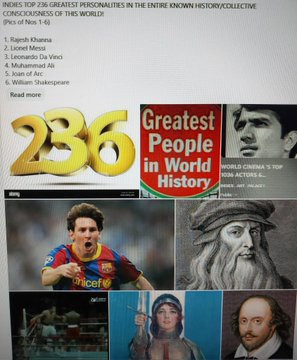
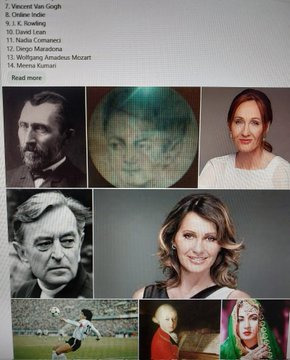
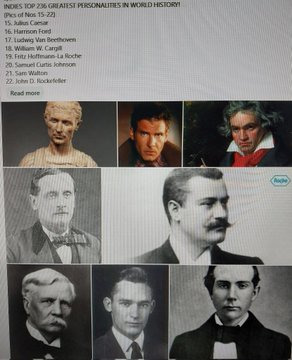
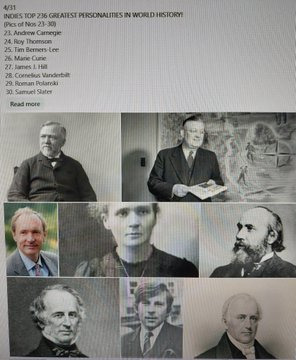
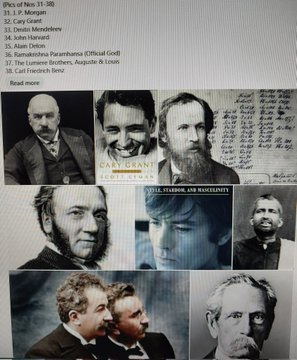

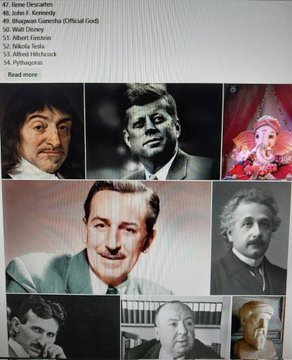
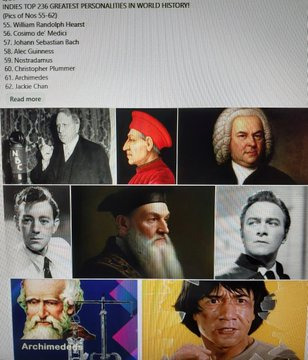
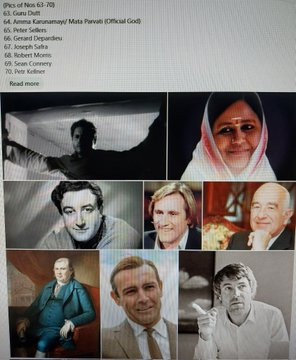
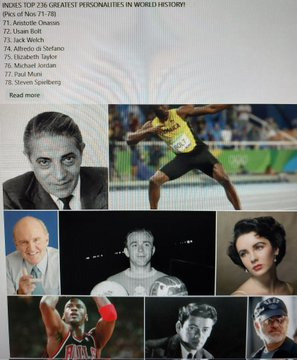
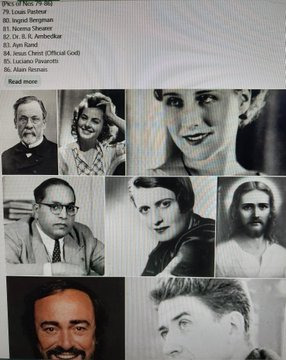
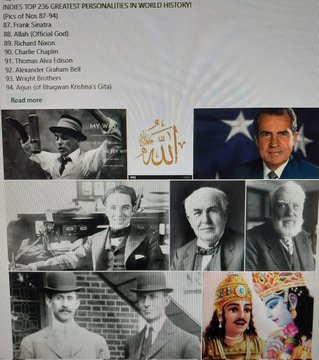
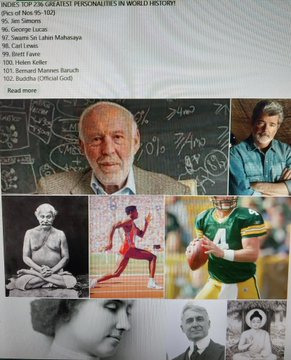
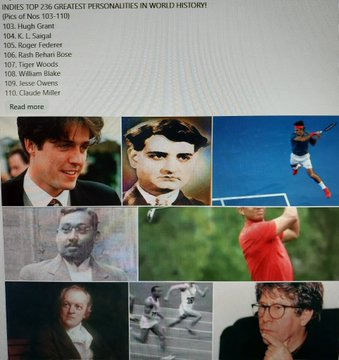
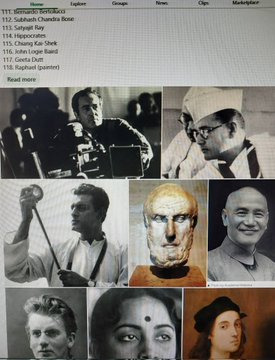
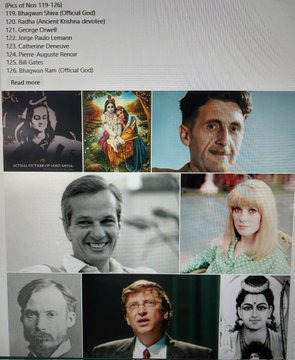
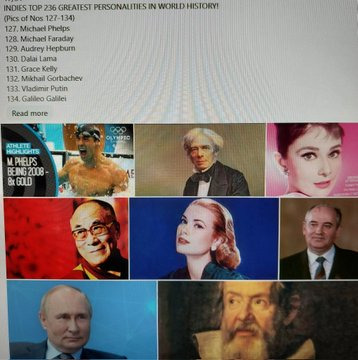
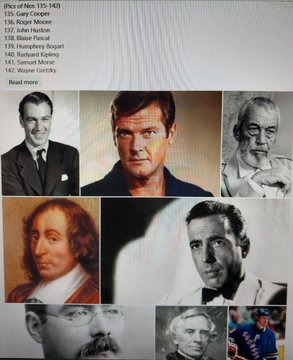
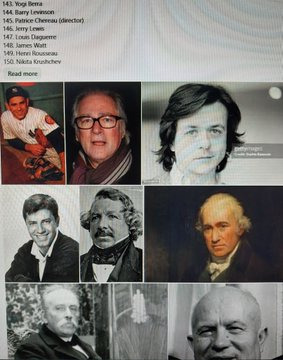
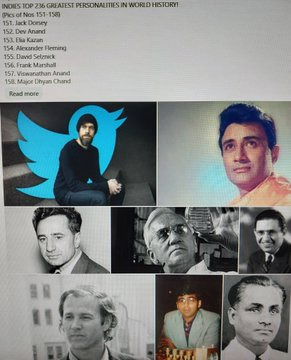
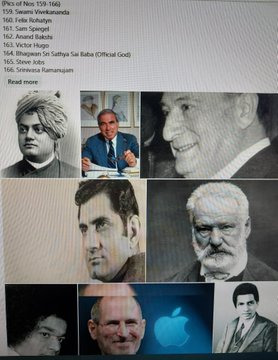
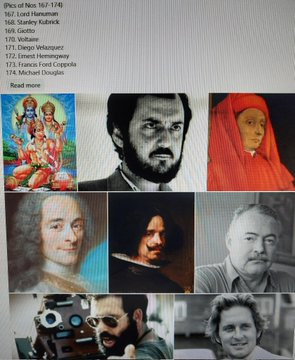
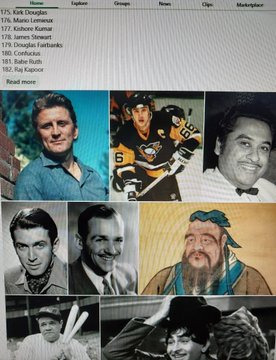
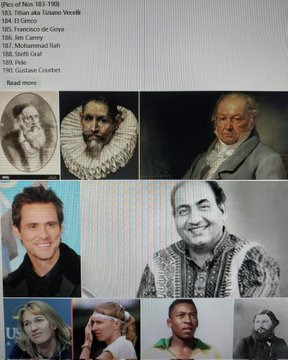
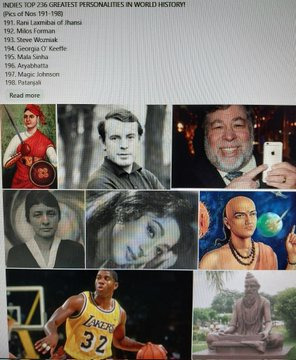
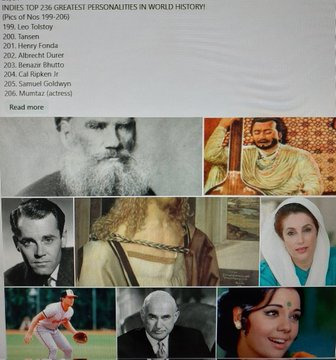
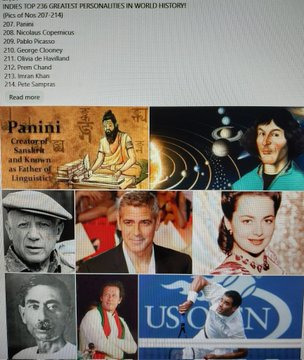
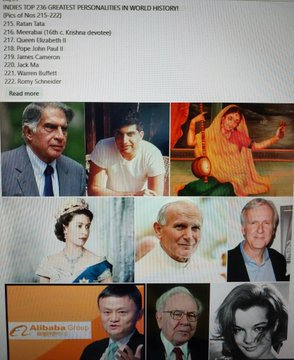
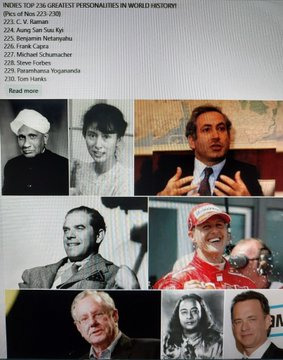
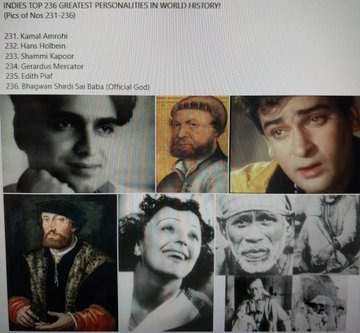
2 notes
·
View notes
Text
THE 236 GREATEST PERSONALITIES IN THE ENTIRE KNOWN HISTORY/COLLECTIVE CONSCIOUSNESS OF THIS WORLD! (@INDIES)
i.e. THE 236 GREATEST PERSONALITIES IN WORLD HISTORY! (@INDIES)
Rajesh Khanna
Lionel Messi
Leonardo Da Vinci
Muhammad Ali
Joan of Arc
William Shakespeare
Vincent Van Gogh
Online Indie
J. K. Rowling
David Lean
Nadia Comaneci
Diego Maradona
Wolfgang Amadeus Mozart
Meena Kumari
Julius Caesar
Harrison Ford
Ludwig Van Beethoven
William W. Cargill
Fritz Hoffmann-La Roche
Samuel Curtis Johnson
Sam Walton
John D. Rockefeller
Andrew Carnegie
Roy Thomson
Tim Berners-Lee
Marie Curie
James J. Hill
Cornelius Vanderbilt
Roman Polanski
Samuel Slater
J. P. Morgan
Cary Grant
Dmitri Mendeleev
John Harvard
Alain Delon
Ramakrishna Paramhansa (Official God)
The Lumiere Brothers, Auguste & Louis
Carl Friedrich Benz
Michelangelo
Maharishi Mahesh Yogi
Ramana Maharishi
Mark Twain
Swami Sri Yukteswar Giri
Bruce Lee
Bhagwan Krishna (Official God)
Charlemagne
Rene Descartes
John F. Kennedy
Bhagwan Ganesha (Official God)
Walt Disney
Albert Einstein
Nikola Tesla
Alfred Hitchcock
Pythagoras
William Randolph Hearst
Cosimo de’ Medici
Johann Sebastian Bach
Alec Guinness
Nostradamus
Christopher Plummer
Archimedes
Jackie Chan
Guru Dutt
Amma Karunamayi/ Mata Parvati (Official God)
Peter Sellers
Gerard Depardieu
Joseph Safra
Robert Morris
Sean Connery
Petr Kellner
Aristotle Onassis
Usain Bolt
Jack Welch
Alfredo di Stefano
Elizabeth Taylor
Michael Jordan
Paul Muni
Steven Spielberg
Louis Pasteur
Ingrid Bergman
Norma Shearer
Dr. B. R. Ambedkar
Ayn Rand
Jesus Christ (Official God)
Luciano Pavarotti
Alain Resnais
Frank Sinatra
Allah (Official God)
Richard Nixon
Charlie Chaplin
Thomas Alva Edison
Alexander Graham Bell
Wright Brothers
Arjun (of Bhagwan Krishna’s Gita)
Jim Simons
George Lucas
Swami Sri Lahiri Mahasaya
Carl Lewis
Brett Favre
Helen Keller
Bernard Mannes Baruch
Buddha (Official God)
Hugh Grant
K. L. Saigal
Roger Federer
Rash Behari Bose
Tiger Woods
William Blake
Jesse Owens
Claude Miller
Bernardo Bertolucci
Subhash Chandra Bose
Satyajit Ray
Hippocrates
Chiang Kai-Shek
John Logie Baird
Geeta Dutt
Raphael (painter)
Bhagwan Shiva (Official God)
Radha (Ancient Krishna devotee)
George Orwell
Jorge Paulo Lemann
Catherine Deneuve
Pierre-Auguste Renoir
Bill Gates
Bhagwan Ram (Official God)
Michael Phelps
Michael Faraday
Audrey Hepburn
Dalai Lama
Grace Kelly
Mikhail Gorbachev
Vladimir Putin
Galileo Galilei
Gary Cooper
Roger Moore
John Huston
Blaise Pascal
Humphrey Bogart
Rudyard Kipling
Samuel Morse
Wayne Gretzky
Yogi Berra
Barry Levinson
Patrice Chereau (director)
Jerry Lewis
Louis Daguerre
James Watt
Henri Rousseau
Nikita Krushchev
Jack Dorsey
Dev Anand
Elia Kazan
Alexander Fleming
David Selznick
Frank Marshall
Viswanathan Anand
Major Dhyan Chand
Swami Vivekananda
Felix Rohatyn
Sam Spiegel
Anand Bakshi
Victor Hugo
Bhagwan Sri Sathya Sai Baba (Official God)
Steve Jobs
Srinivasa Ramanujam
Lord Hanuman
Stanley Kubrick
Giotto
Voltaire
Diego Velazquez
Ernest Hemingway
Francis Ford Coppola
Michael Douglas
Kirk Douglas
Mario Lemieux
Kishore Kumar
James Stewart
Douglas Fairbanks
Confucius
Babe Ruth
Raj Kapoor
Titian aka Tiziano Vecelli
El Greco
Francisco de Goya
Jim Carrey
Mohammad Rafi
Steffi Graf
Pele
Gustave Courbet
Rani Laxmibai of Jhansi
Milos Forman
Steve Wozniak
Georgia O’ Keeffe
Mala Sinha
Aryabhatta
Magic Johnson
Patanjali
Leo Tolstoy
Tansen
Henry Fonda
Albrecht Durer
Benazir Bhutto
Cal Ripken Jr
Samuel Goldwyn
Mumtaz (actress)
Panini
Nicolaus Copernicus
Pablo Picasso
George Clooney
Olivia de Havilland
Prem Chand
Imran Khan
Pete Sampras
Ratan Tata
Meerabai (16th c. Krishna devotee)
Queen Elizabeth II
Pope John Paul II
James Cameron
Jack Ma
Warren Buffett
Romy Schneider
C. V. Raman
Aung San Suu Kyi
Benjamin Netanyahu
Frank Capra
Michael Schumacher
Steve Forbes
Paramhansa Yogananda
Tom Hanks
Kamal Amrohi
Hans Holbein
Shammi Kapoor
Gerardus Mercator
Edith Piaf
Bhagwan Shirdi Sai Baba (Official God)
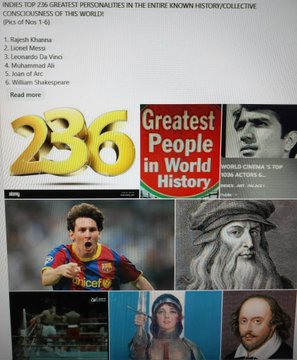


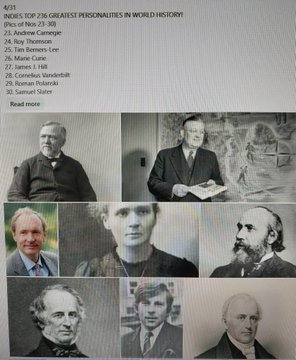
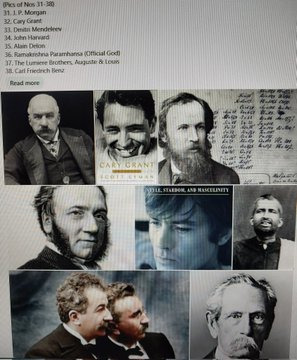
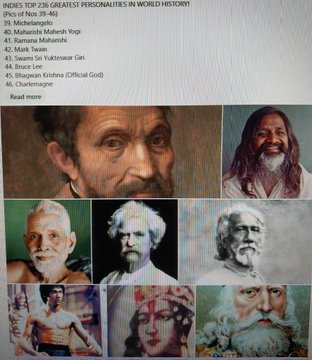
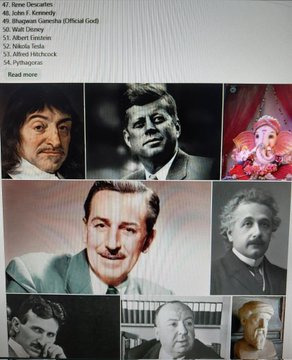
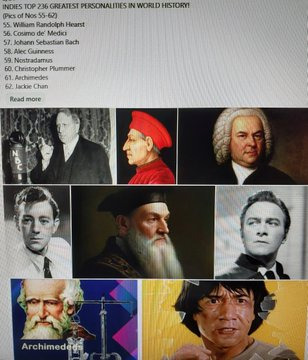
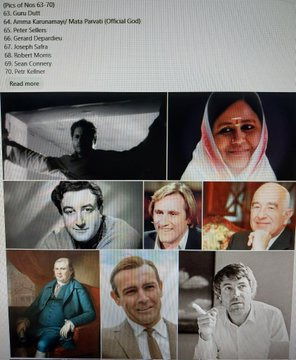
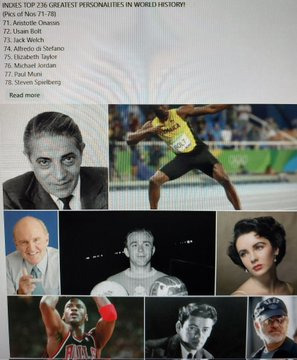
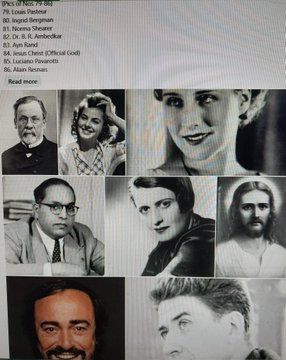
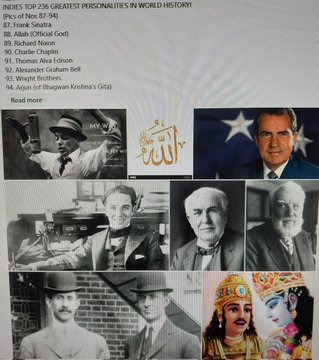
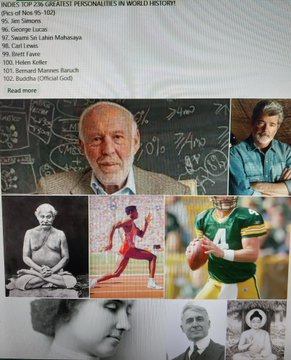
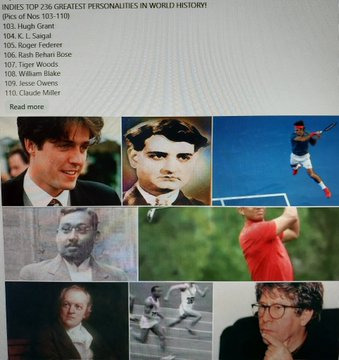
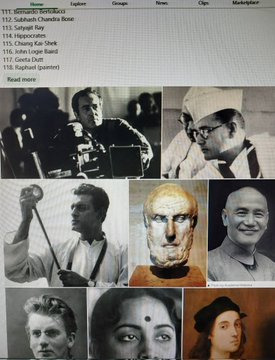
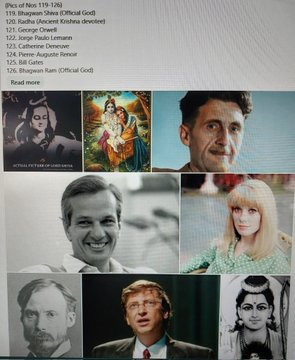
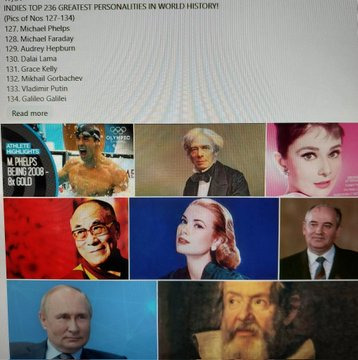
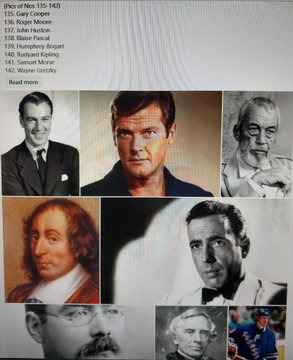
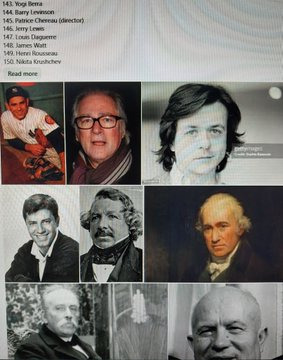
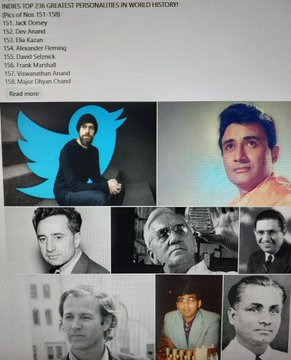
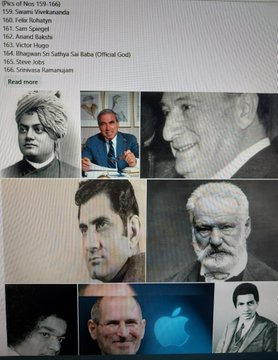
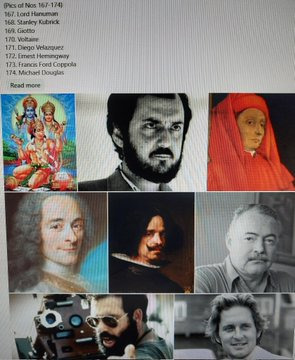
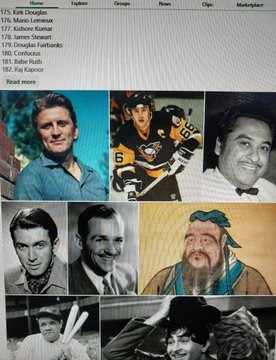
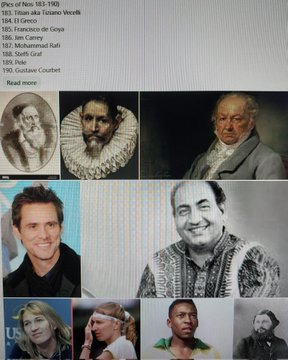
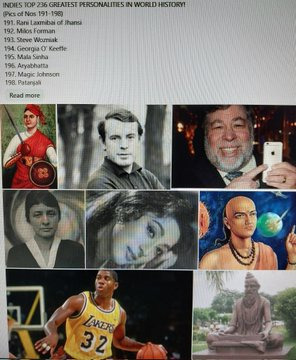
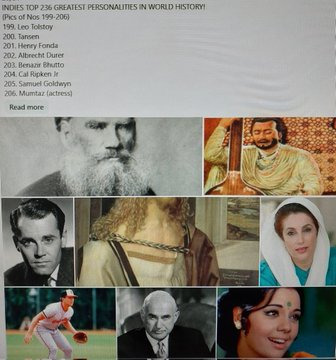

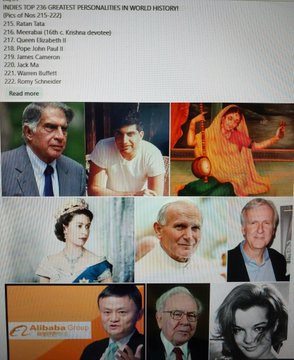
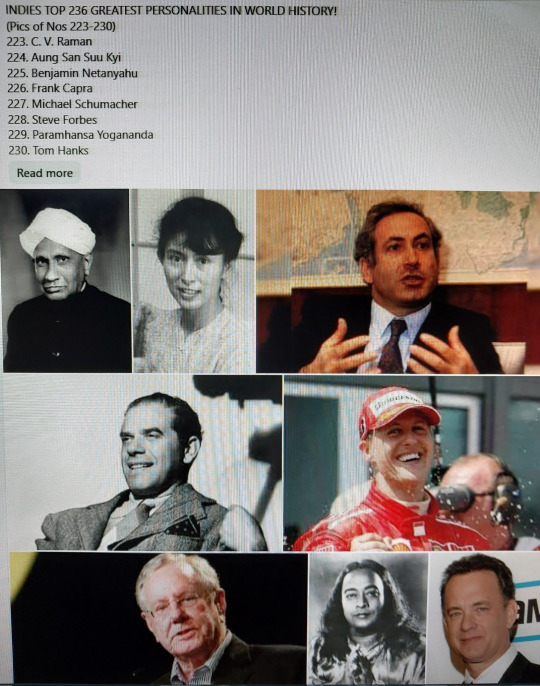
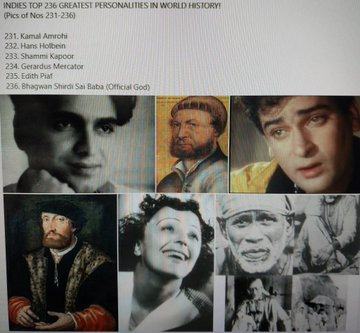
4 notes
·
View notes
Photo

Stanley Holloway and Alec Guinness in The Lavender Hill Mob (Charles Crichton, 1951)
Cast: Alec Guinness, Stanley Holloway, Sidney James, Alfie Bass, Marjorie Fielding, Edie Martin. Screenplay: T.E.B. Clarke. Cinematography: Douglas Slocombe. Art direction: William Kellner. Film editing: Seth Holt. Music: Georges Auric.
The late 1940s and early 1950s were a golden age for British film comedy, but it wasn't a golden age for Britain in other regards. British filmmakers had to find the funny side of the class system, economic stagnation, and postwar malaise. Some of the gloom against which British comic writers and performers were fighting is on evidence in The Lavender Hill Mob, but it mostly lingers in the background. As the movie's robbers and cops career around London, we get glimpses of blackened masonry and vacant lots -- spaces created by bombing and still unfilled. The mad pursuit of millions of pounds by Holland (Alec Guinness) and Pendlebury (Stanley Holloway) and their light-fingered employees Lackery (Sidney James) and Shorty (Alfie Bass) seems to have been inspired by the sheer tedium of muddling through the war and returning to the shriveled routine of the status quo afterward. Who can blame Holland for wanting to cash in after 20 years as a bank clerk supervising the untold wealth in gold from the refinery to the bank? "I was a potential millionaire," he says, "yet I had to be satisfied with eight pounds, fifteen shillings, less deductions." As for Pendlebury, an artist lurks inside the man who spends his time making souvenir statues of the Eiffel Tower for tourists affluent enough to vacation in Paris. "I propagate British cultural depravity," he says with a sigh. Screenwriter T.E.B. Clarke taps into the deep longing of Brits stifled by good manners -- even the thieves Lackery and Shorty are always polite -- and starved by the postwar rationing of the Age of Austerity. Clarke and director Charles Crichton can't do anything so radical as let the Lavender Hill Mob get away with it, but they come right up to the edge of anarchy by portraying the London police as only a little more competent than the Keystone Kops. The film earned Clarke an Oscar, and Guinness got his first nomination. It also allowed the young Audrey Hepburn to catch other filmmakers’ eyes in a bit part.
4 notes
·
View notes
Text
2024 in memoriam (part 23)






























Nancy MacKenzie, 81
(Anthony) Mike Brumley, 62
Archbishop Roberto Lückert León, 84
Bishop Marcelo Martorell, 79
Evans Evans Frankenheimer, 91
Hiram Kasten, 71
Donna Theodore Martin, 82
Gen. Claudio Graziano, 70
Maj. Gen. James E. Paschall, 101
Bishop Daniel Patrick Reilly, 96
Rosalio Martires, 77
Willie Mays; Jr., 93
Bishop José Ángel Rovai, 87
Sylvia Infantas, 101
Dave Williams, 78
Peter B. Gillis, 71
Donald Sutherland, 88
Dave Gatherum, 92
Greg Larson, 84
Dylon Powley, 27
Haviland Smith, 94
Taylor Wily, 56
Archbishop Gianfranco Gardin, 80
James K. Irving, 96
Darren Lewis, 55
Romay Davis, 104
Dr. Frederick Crews, 91
Kåre Karlsson, 100
Jamie Kellner, 77
Abbot Fr. Nikolay Kotelnikov, 66
#Religion#Tributes#Celebrities#TV Shows#Peru#Mexico#Sports#Baseball#Oklahoma#Mississippi#Venezuela#Argentina#Movies#West Virginia#Music#Italy#North Carolina#Oregon#Rhode Island#Massachusetts#Basketball#Politics#The Philippines#Alabama#Chile#Football#Iowa#Florida#Books#Comics
1 note
·
View note
Text











The Queen of Spades (Thorold Dickinson, 1949).
#the queen of spades#the queen of spades (1949)#thorold dickinson#otto heller#hazel wilkinson#william kellner
19 notes
·
View notes
Text


CHRISTENING PORTRAIT OF THE GRAND PRINCE RELEASED!
next | previous | beginning
The Grand Prince, Grand Duke Louis Edward George Edwarovich Shakhovskoy was christened today in an intimate ceremony in the Imperial Chapel of Simvadia Palace. Present were the Empress and Grand Duke George; the Tsarevich and Tsaraevna; Grand Duchess Maria and Grand Duchess Yekaterina; Grand Duchess Margot and Grand Duke Andrey, Grand Duke Yuri, and Grand Duke Nikolai; Grand Duke David and Dr. Josef Muller; Count Thomas Crawley and his cousin, Lady Sylvia Crawley; and the Count and Countess Feodore Leva, who will serve as godparents to the new heir.
Representing foreign territories were the Grand Prince’s godparents, HRH Prince Wilhelm, Hereditary Grand Duke of Estenbourg, and his wife, Princess Genevieve, Hereditary Grand Duchess of Estenbourg. Also present at the ceremony was Ambassador Stephan Kellner, representing King William of the Winden Territories; Ambassador Giuliano Bianchi, representing King Emmanuel (the brother of Grand Duke George) of Monte Vista; and Ambassador Thomas Bradford, representing King Louis George of the United Kingdom of Windenburg and San Myshuno.
@grandducalsims
#gen 1#wbc bulletins#prince edward#sim: louis shakhovskoy#krasnoyarsk nobility: story#princess diana#grandducalsims#sim: feodore leva#sim: katirina leva#ts4#ts4 royal legacy#sims 4 royal legacy#sims 4 royal simblr#sims 4 royal family#sims 4 royalty
30 notes
·
View notes
Photo
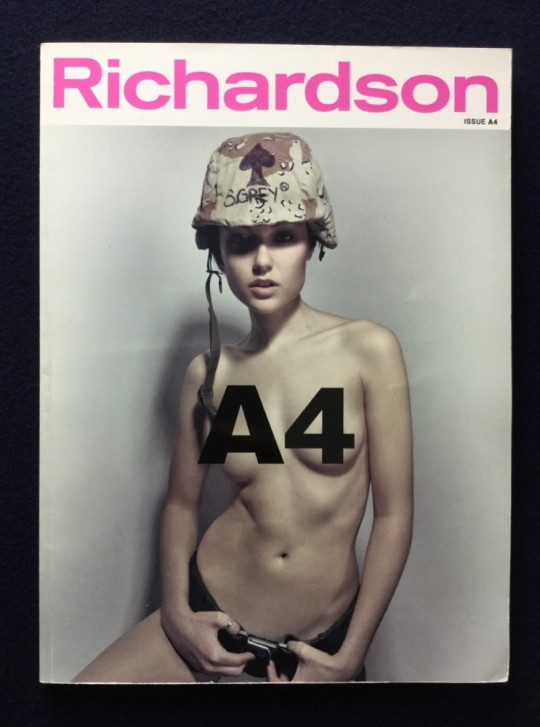
Terry Richardson - Issue A4 - 2010 - Published by Beatrix Felix - 160 pages - 22,5 x 30,4 cm First edition. The Female Gaze Issue. Featuring Sasha Grey photographed by Glen Luchford, and featuring work by, Re/Search, Alex Needham, Amy Kellner, Kira Jolliffe, Bunny Yeager, Tristan Taormino, Michelle Maccarone, Carolee Schneemann, Valie Export, Mila Djordjevic, Gunter Rambow, V. Vale, Simon Ford, Genesis P-Orridge, GB Jones, Clara Herve & Eugene Krafft, Carol Bove, Sue Williams, Tracy Emin, Carolin Kunst & Sunje Todt, Kotaro Iizawa...
6 notes
·
View notes
Text
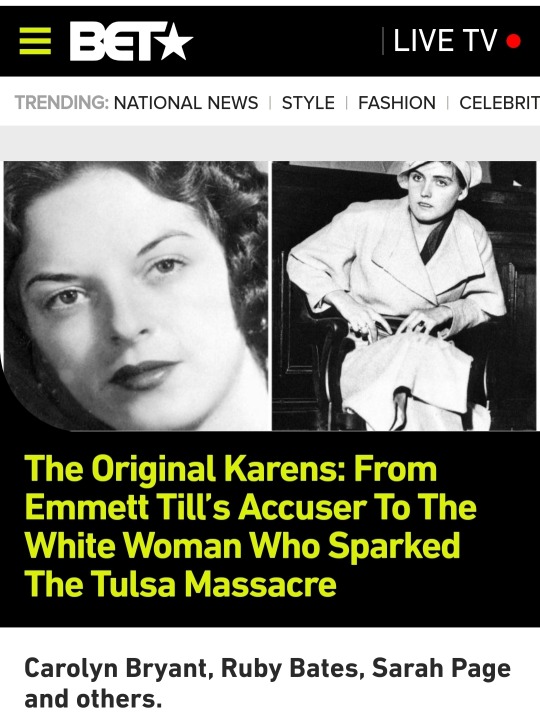
The Original Karens: From Emmett Till’s Accuser To The White Woman Who Sparked The Tulsa Massacre
Written by Clay Cane
In this current climate of protests and demands for justice, the entitled and indignant white women known as “Karens” appear to be falling apart.
From Amy Cooper, whose over dramatic 911 call on a birdwatching Black man blew up in her face, to Lisa Alexander, who was shocked to discover that no one needs her permission to write “Black Lives Matter” in chalk on their own property, Karens are in a rage. Not even a camera in their face will stop their toxic entitlement, which has led to a string of viral sensations.
When thinking of the country’s experiences with white supremacist violence, the discussions are typically centered around men. However, white women have historically been at the helm of this terror, using their tears and imaginary delicateness as ammunition for victim hood and ultimately destroying lives or at its worst, taking one.
Once upon a time, even the slightest hint that white womanhood may be in danger resulted in the lynching of Black children or a thriving town full of Black families being burned to the ground.
Here are some of the most horrific stories of Karens going wild before the term came into existence.
Sarah Page
There has been a lot of talk around Tulsa, Oklahoma due to this month's 99th anniversary of the tragic race massacre that took place there in 1921. Many people may not know the race massacre began with a 17-year-old named Sarah Page.
Page was an elevator operator in what was called the Drexel Building in downtown Tulsa. On May 30, 1921, reportedly, Dick Rowland, a 19-year-old Black shoe shiner, was getting on the elevator to use a segregated bathroom on a higher floor. He allegedly tripped when entering the elevator, accidentally grabbed Page's arm and she reacted by screaming. Rowland fled but the police were called. The next day, Rowland was arrested and word spread that a Black man assaulted a white woman.
According to the 2001 Tulsa Race Riot Commission Report via The Washington Post, Rowland was accused of assaulting Page “on a public elevator in broad daylight."
Within 18 hours, the Greenwood district of Tulsa, also known as Black Wall Street, was annihilated. In 1921, The New York Times described the massacre as “one of the most disastrous race wars ever visited upon an American city.”
No one knows what happened to Sarah Page or Dick Rowland after the massacre.
Fannie Taylor
On January 1, 1923, 22-year-old Fannie Taylor began screaming outside of her home. A neighbor rushed to the distressed white woman only to find her beaten and bruised, yelling for her baby. Miss Fannie claimed a Black man broke into her home and attacked her. The neighbor searched her house to find the baby safe and no signs of a break in.
Rumors quickly spread that Taylor was raped and robbed by a Black man. Taylor’s husband, James Taylor, gathered a group of men to find the imaginary criminal, even calling on the Klu Klux Klan for assistance.
A pack of 400 terrorists headed to the neighboring area, an affluent Black town in Rosewood, Florida, accusing any Black man they could of the crime. Fannie’s fraudulent tears was the excuse these envious hellions needed to purge out their rage.
Their first victim was Sam Carter, a local blacksmith, who was tortured and hung. They eventually began looking for a man named Jesse Hunter, who they claimed was an escaped convict.
The Black residents of Rosewood fought back but there were many casualties, including Sarah Carrier, a woman who did Fannie Taylor’s laundry. She was shot in the head, according to History.com. Her son Sylvester Carrier was also fatally shot.
The race massacre lasted for a week, burning Rosewood to the ground and killing countless Black people.
As for Fannie Taylor, she reportedly had an affair with a white man who beat her, which is why she had been found abused that night. She thought it was better to accuse a Black man of assault then to take accountability for her own actions.
The 1997 film Rosewood, directed by the late John Singleton, depicted the massacre.
See the clip below of actress Catherine Kellner as Fannie Taylor.
Eleanor Strubing
In December of 1940, Eleanor Strubing, a wealthy white woman in Connecticut accused her 31-year-old Black chauffeur, Joseph Spell, of raping her four times and throwing her into a river. Spell was arrested within hours and immediately sent to jail to wait for trial.
The New York Times famously ran a story with the headline, "Mrs. J.K. Strubing Is Kidnapped And Hurled Off Bridge by Butler; WOMAN KIDNAPPED; HURLED OFF BRIDGE." The article claimed he “confessed after 16 hours" of questioning.
Spell was facing 30 years in prison.
Thankfully, the NAACP Legal Defense Fund and its head lawyer, Thurgood Marshall, represented Spell. Marshall and his co-counsel proved evidence that Strubing lied. She, in fact, had consensual sex with Spell and jumped in the river because she was terrified that she might become pregnant from their affair. In her mind, the only option was to accuse Spell of rape in order to justify a possible pregnancy.
An all-white jury found Joseph Spell not guilty, which was shocking for the time. Nonetheless, if this accusation would have been made in the South, Joseph Spell certainly would have died by public lynching.
Wil Haygood, the author of Showdown: Thurgood Marshall and the Supreme Court Nomination That Changed America, wrote about the ruling, "It was a miracle. But Thurgood Marshall trafficked in miracles.”
Strubing, whose father was an investment banker and the former governor of the Philadelphia Stock Exchange, suffered no punishment for lying under oath. Her husband, John K. Strubing, died in 1961 and she remarried to John W. Barclay. Stribing died at 92 years old in 2000.
Joseph Spell moved to East Orange, New Jersey after the trial. It’s not clear when he passed away.
The 2017 movie Thurgood was based on the Joseph Spell trial. See the clip below of Kate Hudson as Eleanor Strubing.
Carolyn Bryant
In August of 1955, 21-year-old Carolyn Bryant accused 14-year-old Emmett Till of touching her and whistling at her in a store (he reportedly had a lisp and was unable to whistle.) Till, who was visiting from Chicago, was in Mississippi for the summer spending time with family. Within hours, he was kidnapped from his uncle’s home. The child was tortured, mutilated and thrown into the Tallahatchie River. His naked body was weighed down with a fan blade.
Carolyn’s husband, Roy Bryant and her brother-in-law J.W. Milam, the terrorists who lynched Till, were found not guilty by an all-white jury.
In the 2017 book The Blood of Emmett Till by Timothy Tyson, Carolyn Bryant admitted to lying and claimed that she actually didn’t remember what happened that day in the store.
She is still alive today, living in Mississippi at 86 years old. Emmett Till would have been 79 years old on July 25 if it wasn’t for Carolyn Bryant.
The 65th anniversary of his death is August 28.
Victoria Price and Ruby Bates
Before The Central Park Five in 1989, which would become the Exonerated Five in 2002, there was the Scottsboro Boys in 1932.
On Mach 25, 1931, a group of Black and white teenagers were riding freight trains looking for work, which was common during the Great Depression. The white teens wanted the Black teens off the train and a fight broke out. The white teens attempted to forcibly throw the Black teens from the train. In defending themselves, the Black teenagers instead kicked the white teens off the locomotive.
The angry white teens went to a local sheriff who demanded the train be stopped.
Nine Black teens were removed, ages 13 to 19. However, two white women, Victoria Price and Ruby Bates, were also on the train and spent their time wrongfully accusing several of the Black boys of rape.
Similar to the Exonerated Five, that one accusation stole the innocence of nine Black children.
The teens were jailed in Scottsboro, Alabama: Haywood Patterson, 18; Clarence Norris, 19: Charlie Weems, 19; brothers Andy Wright, 19 and Leroy Wright, 13; Olin Montgomery, who was nearly blind, 17; Ozie Powell, 16; Eugene Williams, 13, and Willie Roberson, 16, who could barely walk due to severe syphilis.
The all-white and all-male jury trial was over in a matter of days and all of them — except 13-year-old Leroy Wright — were found guilty of rape and given the death penalty. There was no evidence of course since Bates couldn’t identify the men she claimed raped her.
The NAACP and the International Labor Defense (ILD), the legal wing of the American Communist Party, joined the case. By November 1932, the U.S. Supreme Court ruled that the Scottsboro defendants had been denied the right to counsel. Shortly after, Ruby Bates admitted she lied.
Nonetheless, the back and forth with the courts continued for years.
By 1936, Haywood Patterson was convicted of rape and sentenced to 75 years. In 1948, he escaped from prison and made it to Michigan. The governor refused to extradite him to Alabama. By 1951, Patterson was convicted of manslaughter after a barroom brawl. In 1952, he died of cancer. He was 39 years old.
In July of 1937, Clarence Norris was eventually convicted of rape and sentenced to life in prison. He was paroled in 1946 and moved north, where he married and had children. His autobiography, The Last of the Scottsboro Boys was released in 1979. He passed away in 1989 at 76 years old.
In July of 1937, Andrew Wright was convicted of rape and sentenced to 99 years. He was released in 1950 at 38 years old. Charlie Weems was also convicted of rape and paroled in 1943. He spent the rest of his life in Atlanta. It’s not clear when or if Wright and Weems have passed away.
Ozie Powell’s rape charges were dropped but he pled guilty to assaulting a deputy, which happened while in custody. He was released from prison in 1946. After spending four years on death row as adults, all charges against Willie Roberson, Olen Montgomery, Eugene Williams, and Leroy Wright were dropped.
It is not known how or when Willie Roberson, Olen Montgomery, Eugene Williams, or Ozie Powell died.
After being released, Leroy Wright, the youngest, went on a national lecture tour and then joined the Army. In 1959, according to PBS, Wright accused his wife of having an affair, fatally shot her and then committed suicide. He was 41 years old.
As for Victoria Price and Ruby Bates, Price never recanted her testimony and died in 1982 at 77 years old. Bates had the privilege of going on a speaking tour, bizarrely, for the International Labor Defense (ILD), which defended the Scottboro Boys. She claimed to have lied because she was "excited and frightened by the ruling class of Scottsboro." Bates died in 1976.
11 notes
·
View notes
Photo




New Releases - Coming August 25th
We're looking forward to the releases of four books this week. I loved Darius the Great and am excited to see the sequel coming. For release day tomorrow, we also have an interview with Darcie Little Badger, author of Elatsoe, so please watch for that.
Darius the Great Deserves Better (Darius The Great #2) by Adib Khorram Dial Books for Young Readers
In this companion to the award-winning Darius the Great Is Not Okay, Darius suddenly has it all: a boyfriend, an internship, a spot on the soccer team. It’s everything he’s ever wanted–but what if he deserves better?
Darius Kellner is having a bit of a year. Since his trip to Iran this past spring, a lot has changed. He’s getting along with his dad, and his best friend Sohrab is only a Skype call away. Between his first boyfriend, Landon, his varsity soccer practices, and his internship at his favorite tea shop, Darius is feeling pretty okay. Like he finally knows what it means to be Darius Kellner.
Then, of course, everything changes. Darius’s grandmothers are in town for a long visit while his dad is gone on business, and Darius isn’t sure whether they even like him. The internship isn’t what Darius thought it would be, and now he doesn’t know about turning tea into his career. He was sure he liked Landon, but when he starts hanging out with Chip–soccer teammate and best friend of Trent Bolger, epic bully–well, he’s just not so sure about Landon anymore, either.
Darius thought he knew exactly who he was and what he wanted, but maybe he was wrong. Maybe he deserves better. — Cover image and summary via Goodreads
Now That I’ve Found You by Kristina Forest Roaring Brook Press
Following in the footsteps of her überfamous grandma, eighteen-year-old Evie Jones is poised to be Hollywood’s next big star. That is until a close friend’s betrayal leads to her being blacklisted . . .
Fortunately, Evie knows just the thing to save her floundering career: a public appearance with America’s most beloved actress—her grandma Gigi, aka the Evelyn Conaway. The only problem? Gigi is a recluse who’s been out of the limelight for almost twenty years. Days before Evie plans to present her grandma with an honorary award in front of Hollywood’s elite, Gigi does the unthinkable: she disappears.
With time running out and her comeback on the line, Evie reluctantly enlists the help of the last person to see Gigi before she vanished: Milo Williams, a cute musician Evie isn’t sure she can trust. As Evie and Milo conduct a wild manhunt across New York City, romance and adventure abound while Evie makes some surprising discoveries about her grandma—and herself. — Cover image and summary via Goodreads
Elatsoe by Darcie Little Badger illustrations by Rovina Cai Levine Querido
Imagine an America very similar to our own. It’s got homework, best friends, and pistachio ice cream.
There are some differences. This America been shaped dramatically by the magic, monsters, knowledge, and legends of its peoples, those Indigenous and those not. Some of these forces are charmingly everyday, like the ability to make an orb of light appear or travel across the world through rings of fungi. But other forces are less charming and should never see the light of day.
Elatsoe lives in this slightly stranger America. She can raise the ghosts of dead animals, a skill passed down through generations of her Lipan Apache family. Her beloved cousin has just been murdered, in a town that wants no prying eyes. But she is going to do more than pry. The picture-perfect facade of Willowbee masks gruesome secrets, and she will rely on her wits, skills, and friends to tear off the mask and protect her family. — Cover image and summary via Goodreads
Where Dreams Descend (Kingdom of Cards #1) by Janella Angeles Wednesday Books
In a city covered in ice and ruin, a group of magicians face off in a daring game of magical feats to find the next headliner of the Conquering Circus, only to find themselves under the threat of an unseen danger striking behind the scenes.
As each act becomes more and more risky and the number of missing magicians piles up, three are forced to reckon with their secrets before the darkness comes for them next.
The Star: Kallia, a powerful showgirl out to prove she’s the best no matter the cost
The Master: Jack, the enigmatic keeper of the club, and more than one lie told
The Magician: Demarco, the brooding judge with a dark past he can no longer hide
— Cover image and summary via Goodreads
14 notes
·
View notes